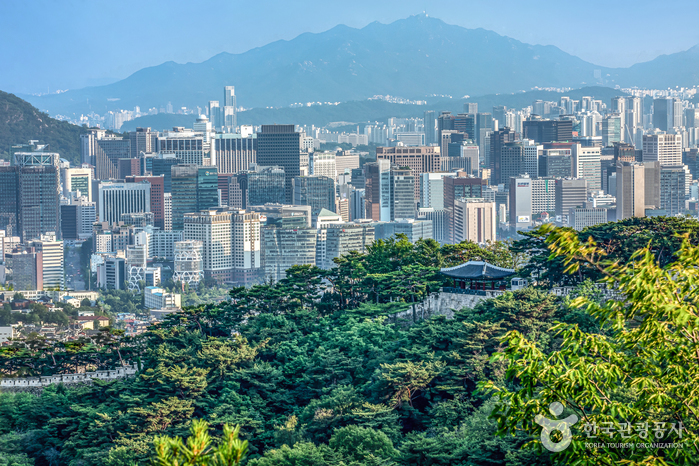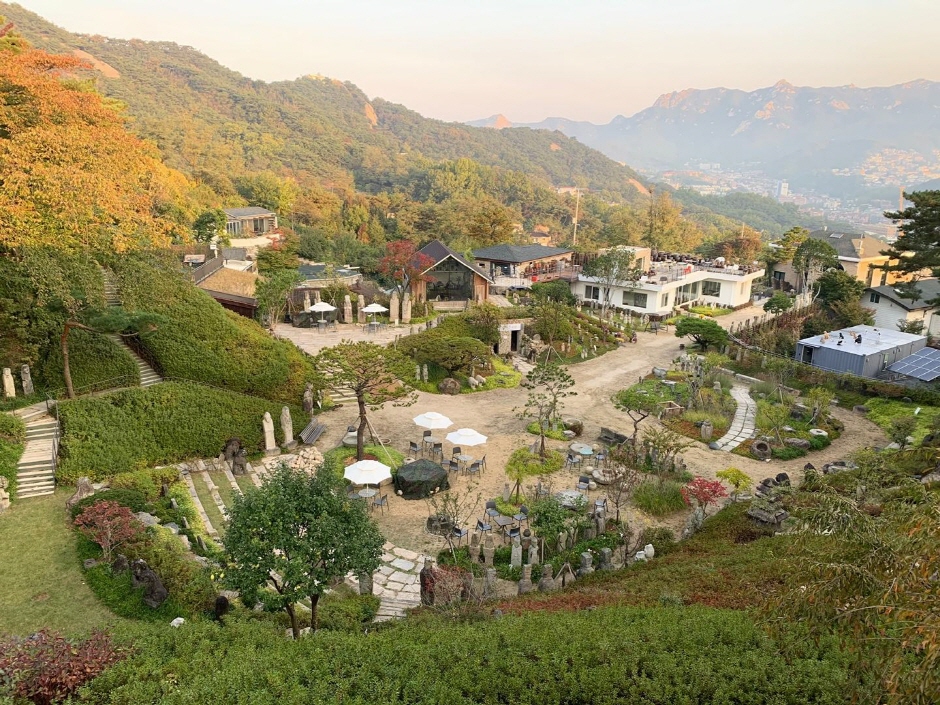Dior - Hyundai Apgujeong Main Branch (2F) [Tax Refund Shop] (디올 현대 본점 2층)
4.6Km 2024-04-19
165, Apgujeong-ro, Gangnam-gu, Seoul
-
BVLGARI - Hyundai Apgujeong Main Branch [Tax Refund Shop] (불가리 현대 본점)
4.6Km 2024-04-22
165, Apgujeong-ro, Gangnam-gu, Seoul
-
Fendi - Hyundai Apgujeong Main Branch [Tax Refund Shop] (펜디 현대 본점)
4.6Km 2024-04-23
165, Apgujeong-ro, Gangnam-gu, Seoul
-
Gentle Monster - Hyundai Apgujeong Main Branch [Tax Refund Shop] (젠틀몬스터 현대본점)
4.6Km 2024-04-16
1F, 165, Apgujeong-ro, Gangnam-gu, Seoul
-
Hyundai Department Store - Apgujeong Branch (Main store) (현대백화점 (압구정본점))
4.6Km 2020-12-30
165, Apgujeong-ro, Gangnam-gu, Seoul
+82-2-547-2233
Hyundai Department Store aims to achieve customer satisfaction by providing a wide selection of goods that are designed to create a luxurious lifestyle as well as express one's self and individuality.
Bugak Skyway Palgakjeong Pavilion (북악스카이 팔각정)
4.7Km 2024-12-31
267 Bugaksan-ro, Jongno-gu, Seoul
Bugak Skyway Palgakjeong Pavilion exudes a tranquil, serene beauty regardless of the season. The pavilion, which sits on Bugaksan's 1,652,900 square meter summit at an altitude of 345 meters, was built in a traditional Korean-style and became a popular attraction within the city. There are also spaces for visitors to enjoy food and drinks.
Olive Young - Ahyeon Station Branch [Tax Refund Shop] (올리브영 아현역)
4.7Km 2024-04-18
10, Sinchon-ro 35-gil, Seodaemun-gu, Seoul
-
Mok In Museum Mok Seok Won (목인박물관 목석원)
4.7Km 2021-09-01
46-1, Changuimun-ro 5-gil, Jongno-gu, Seoul
+82-2-722-5066
Mok In Museum Mok Seok Won relocated in 2019 from Insa-dong to Buam-dong. Six exhibition halls offer visitors a look at wooden figures from around the world. Mokin refers to traditional wooden sculptures carved in shapes of human figures or various animals. The museum holds around 12,000 wooden folk sculptures including those used to decorate funeral carriages and temples mostly from the Joseon dynasty up to modern times. The museum also has an outdoor exhibition hall that harmonizes the sculptures with nature.
Dongnimmun Gate (독립문)
4.7Km 2022-12-15
251, Tongil-ro, Seodaemun-gu, Seoul
Dongnimmun stands at the location originally known as Yeongeun, where envoys were once treated. When a Chinese envoy visited, the King would go out through this door to greet. In 1898, to announce the independence from Japan, Dongnimun was constructed with the fund collected by the citizens. The traces of the past still remain on Dongnimmun with two pillars in front of Dongnimmun being the remains of Yeongeunmun.
The Arc de Triomphe in France can be recalled in comparison to Dongnimmun. Dongnimmun was built using granite with a passageway x_height of 14.28 meters. On the top it is written ‘Dongnimmun’ in Korean with the national flag drawn on each side. On the inner-left side there are stone stairs leading to the attic. The national flower Mugunghwa are planted around Dongnimmun. Now it is surrounded by roads and it is eye-catching to view when passing by.
Seodaemun Prison History Museum (서대문형무소역사관)
4.7Km 2024-12-02
251 Tongil-ro, Seodaemun-gu, Seoul
Seodaemun Prison was built under the Japanese administration to imprison independence movement activists. It first opened on October 21, 1908 under the name Gyeongseong Prison. Eventually, so many activists were imprisoned that the building had to be expanded. At that time, the name changed to Seodaemun Prison on September 3, 1912. Eighty years later, the prison was turned into Seodaemun Independence Park on August 15, 1992 to commemorate the Korean patriots who were tortured in prison, giving their lives for freedom. Of the many buildings, only seven were preserved for their historical significance, among which three prison buildings and the execution site were designated as a Historic Site. In 1998, the park underwent another transformation into today's Seodaemun Prison History Hall to educate the public on the importance of Korea's independence and the sacrifices of those who fought to achieve it.
![Dior - Hyundai Apgujeong Main Branch (2F) [Tax Refund Shop] (디올 현대 본점 2층)](http://tong.visitkorea.or.kr/cms/resource/01/2890501_image2_1.jpg)
![BVLGARI - Hyundai Apgujeong Main Branch [Tax Refund Shop] (불가리 현대 본점)](http://tong.visitkorea.or.kr/cms/resource/10/2890510_image2_1.jpg)
![Fendi - Hyundai Apgujeong Main Branch [Tax Refund Shop] (펜디 현대 본점)](http://tong.visitkorea.or.kr/cms/resource/38/2890538_image2_1.jpg)
![Gentle Monster - Hyundai Apgujeong Main Branch [Tax Refund Shop] (젠틀몬스터 현대본점)](http://tong.visitkorea.or.kr/cms/resource/99/2887999_image2_1.jpg)


![Olive Young - Ahyeon Station Branch [Tax Refund Shop] (올리브영 아현역)](http://tong.visitkorea.or.kr/cms/resource/40/2889240_image2_1.jpg)

 English
English
 한국어
한국어 日本語
日本語 中文(简体)
中文(简体) Deutsch
Deutsch Français
Français Español
Español Русский
Русский